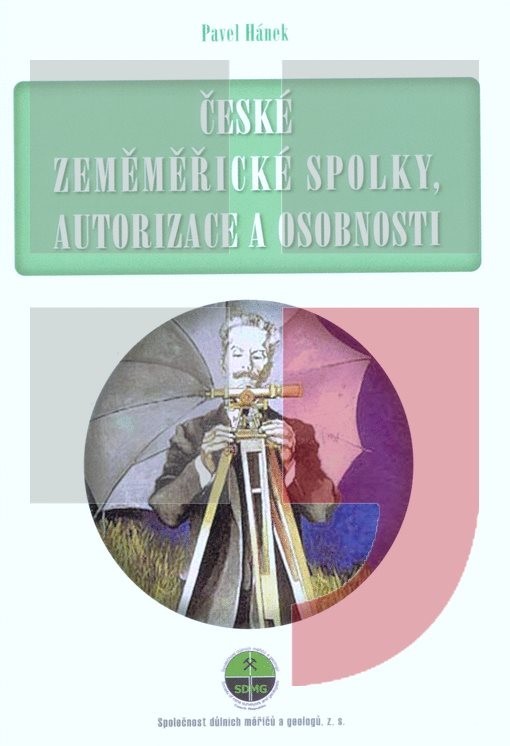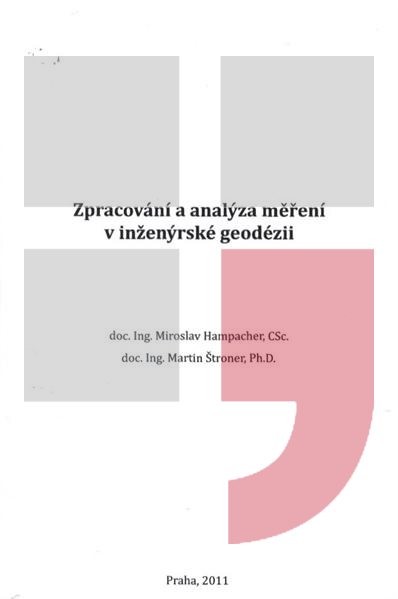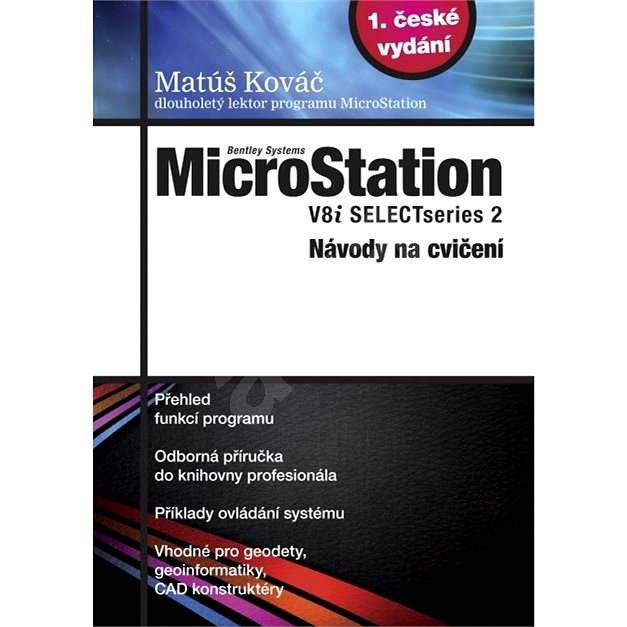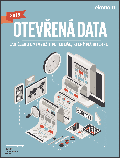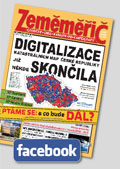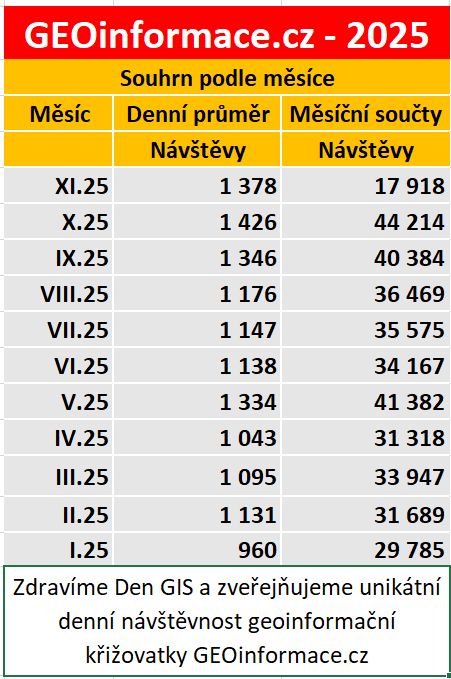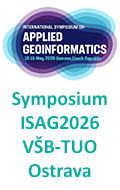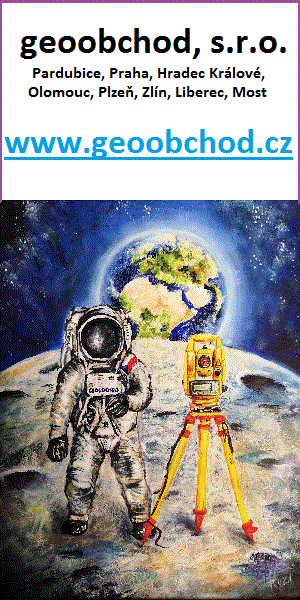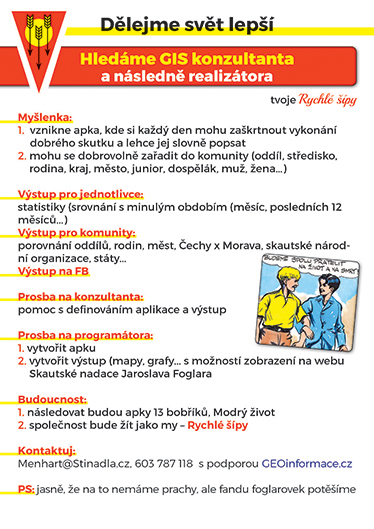zprávy
zdroje zpráv:Rada / odborný rada – vedoucí ekonomicko – správního oddělení Kanceláře ředitele
1.10.2018 14:19 ČÚZK - předpisy a opatření Katastrální úřad pro Zlínský krajvypisuje výběrové řízení na místo
Rada / odborný rada – vedoucí ekonomicko – správního oddělení Kanceláře ředitele
Soutěž Žít krajinou. Přihlaste své pozemkové úpravy
1.10.2018 14:02 GeoBusiness Státní pozemkový úřad pořádá dvanáctý ročník soutěže Žít krajinou. Pořadatelé soutěže chtějí ocenit a představit veřejnosti nejkvalitnější realizovaná opatření navrhovaná v pozemkových úpravách. Soutěž ... PřečístOdborný referent – obnova katastrálního operátu na Katastrálním pracovišti Třinec Katastrálního úřad
1.10.2018 13:43 ČÚZK - volná místa Katastrální úřad pro Moravskoslezský kraj - Katastrální pracoviště Třinec vypisuje výběrové řízení na místo Odborný referent – obnova katastrálního operátu na Katastrálním pracovišti Třinec Katastrálního úřadOdborný referent – obnova katastrálního operátu na Katastrálním pracovišti Třinec Katastrálního úřad
1.10.2018 13:43 ČÚZK /Urady/Katastralni-urady/Katastralni-urady/Katastralni-urad-pro-Moravskoslezsky-kraj/Uredni-deska/Oznameni-a-jina-uredni-sdeleni/Volna-mista/Odborny-referent-–-obnova-katastralniho-operat-(2)Odborný referent – obnova katastrálního operátu na Katastrálním pracovišti Třinec Katastrálního úřad
1.10.2018 13:43 ČÚZK - předpisy a opatření Katastrální úřad pro Moravskoslezský kraj - Katastrální pracoviště Třinecvypisuje výběrové řízení na místo
Odborný referent – obnova katastrálního operátu na Katastrálním pracovišti Třinec Katastrálního úřadu pro Moravskoslezský kraj
Vrchní referent/rada – obnova katastrálního operátu na Katastrálním pracovišti Ostrava Katastrálního
1.10.2018 13:41 ČÚZK - předpisy a opatření Katastrální úřad pro Moravskoslezský kraj - Katastrální pracoviště Ostravavypisuje výběrové řízení na místo
Vrchní referent/rada – obnova katastrálního operátu na Katastrálním pracovišti Ostrava Katastrálního úřadu pro Moravskoslezský kraj
Vrchní referent/rada – obnova katastrálního operátu na Katastrálním pracovišti Ostrava Katastrálního
1.10.2018 13:41 ČÚZK - volná místa Katastrální úřad pro Moravskoslezský kraj - Katastrální pracoviště Ostrava vypisuje výběrové řízení na místo Vrchní referent/rada – obnova katastrálního operátu na Katastrálním pracovišti Ostrava KatastrálníhoVrchní referent/rada – obnova katastrálního operátu na Katastrálním pracovišti Ostrava Katastrálního
1.10.2018 13:41 ČÚZK /Urady/Katastralni-urady/Katastralni-urady/Katastralni-urad-pro-Moravskoslezsky-kraj/Uredni-deska/Oznameni-a-jina-uredni-sdeleni/Volna-mista/Vrchni-referent-rada-–-obnova-katastralniho-op-(4)Odborný referent/vrchní referent – zápisy v řízení V a Z na Katastrálním pracovišti Ostrava Katastrá
1.10.2018 13:39 ČÚZK - volná místa Katastrální úřad pro Moravskoslezský kraj - Katastrální pracoviště Ostrava vypisuje výběrové řízení na místo Odborný referent/vrchní referent – zápisy v řízení V a Z na Katastrálním pracovišti Ostrava KatastráOdborný referent/vrchní referent – zápisy v řízení V a Z na Katastrálním pracovišti Ostrava Katastrá
1.10.2018 13:39 ČÚZK - předpisy a opatření Katastrální úřad pro Moravskoslezský kraj - Katastrální pracoviště Ostravavypisuje výběrové řízení na místo
Odborný referent/vrchní referent – zápisy v řízení V a Z na Katastrálním pracovišti Ostrava Katastrálního úřadu pro Moravskoslezský kraj
Odborný referent/vrchní referent – zápisy v řízení V a Z na Katastrálním pracovišti Ostrava Katastrá
1.10.2018 13:39 ČÚZK /Urady/Katastralni-urady/Katastralni-urady/Katastralni-urad-pro-Moravskoslezsky-kraj/Uredni-deska/Oznameni-a-jina-uredni-sdeleni/Volna-mista/odborny-referent-vrchni-referent-–-zapisy-v-rizeniSiemens nabírá partnery pro MindSphere, operační systém průmyslového internetu věcí
1.10.2018 13:39 GeoBusiness Siemens v České republice spustil globální partnerský program MindSphere a vytváří ekosystém pro průmyslový internet věcí. Firma do partnerského programu, který má otevírat nové ... PřečístVrchní referent/rada – obnova katastrálního operátu na Katastrálním pracovišti Opava Katastrálního ú
1.10.2018 13:37 ČÚZK - volná místa Katastrální úřad pro Moravskoslezský kraj - Katastrální pracoviště Opava vypisuje výběrové řízení na místo Vrchní referent/rada – obnova katastrálního operátu na Katastrálním pracovišti Opava Katastrálního úVrchní referent/rada – obnova katastrálního operátu na Katastrálním pracovišti Opava Katastrálního ú
1.10.2018 13:37 ČÚZK - předpisy a opatření Katastrální úřad pro Moravskoslezský kraj - Katastrální pracoviště Opavavypisuje výběrové řízení na místo
Vrchní referent/rada – obnova katastrálního operátu na Katastrálním pracovišti Opava Katastrálního úřadu pro Moravskoslezský kraj
Vrchní referent/rada – obnova katastrálního operátu na Katastrálním pracovišti Opava Katastrálního ú
1.10.2018 13:37 ČÚZK /Urady/Katastralni-urady/Katastralni-urady/Katastralni-urad-pro-Moravskoslezsky-kraj/Uredni-deska/Oznameni-a-jina-uredni-sdeleni/Volna-mista/Vrchni-referent-rada-–-obnova-katastralniho-op-(2)Vrchní referent/rada – řízení o opravě chyby v SPI na Katastrálním pracovišti Krnov Katastrálního úř
1.10.2018 13:36 ČÚZK - volná místa Katastrální úřad pro Moravskoslezský kraj - Katastrální pracoviště Krnov vypisuje výběrové řízení na místo Vrchní referent/rada – řízení o opravě chyby v SPI na Katastrálním pracovišti Krnov Katastrálního úřVrchní referent/rada – řízení o opravě chyby v SPI na Katastrálním pracovišti Krnov Katastrálního úř
1.10.2018 13:36 ČÚZK - předpisy a opatření Katastrální úřad pro Moravskoslezský kraj - Katastrální pracoviště Krnovvypisuje výběrové řízení na místo
Vrchní referent/rada – řízení o opravě chyby v SPI na Katastrálním pracovišti Krnov Katastrálního úřadu pro Moravskoslezský kraj
Vrchní referent/rada – řízení o opravě chyby v SPI na Katastrálním pracovišti Krnov Katastrálního úř
1.10.2018 13:36 ČÚZK /Urady/Katastralni-urady/Katastralni-urady/Katastralni-urad-pro-Moravskoslezsky-kraj/Uredni-deska/Oznameni-a-jina-uredni-sdeleni/Volna-mista/Vrchni-referent-rada-–-rizeni-o-oprave-chyby-v-SPIOdborný referent – obnova katastrálního operátu na Katastrálním pracovišti Krnov Katastrálního úřadu
1.10.2018 13:34 ČÚZK /Urady/Katastralni-urady/Katastralni-urady/Katastralni-urad-pro-Moravskoslezsky-kraj/Uredni-deska/Oznameni-a-jina-uredni-sdeleni/Volna-mista/Odborny-referent-–-obnova-katastralniho-operatu-naOdborný referent – obnova katastrálního operátu na Katastrálním pracovišti Krnov Katastrálního úřadu
1.10.2018 13:34 ČÚZK - předpisy a opatření Katastrální úřad pro Moravskoslezský kraj - Katastrální pracoviště Krnovvypisuje výběrové řízení na místo
Odborný referent – obnova katastrálního operátu na Katastrálním pracovišti Krnov Katastrálního úřadu pro Moravskoslezský kraj
Odborný referent – obnova katastrálního operátu na Katastrálním pracovišti Krnov Katastrálního úřadu
1.10.2018 13:34 ČÚZK - volná místa Katastrální úřad pro Moravskoslezský kraj - Katastrální pracoviště Krnov vypisuje výběrové řízení na místo Odborný referent – obnova katastrálního operátu na Katastrálním pracovišti Krnov Katastrálního úřaduOdborný referent – zápisy v řízení V a Z na Katastrálním pracovišti Krnov Katastrálního úřadu pro Mo
1.10.2018 13:32 ČÚZK - předpisy a opatření Katastrální úřad pro Moravskoslezský kraj - Katastrální pracoviště Krnovvypisuje výběrové řízení na místo
Odborný referent – zápisy v řízení V a Z na Katastrálním pracovišti Krnov Katastrálního úřadu pro Moravskoslezský kraj
Odborný referent – zápisy v řízení V a Z na Katastrálním pracovišti Krnov Katastrálního úřadu pro Mo
1.10.2018 13:32 ČÚZK - volná místa Katastrální úřad pro Moravskoslezský kraj - Katastrální pracoviště Krnov vypisuje výběrové řízení na místo Odborný referent – zápisy v řízení V a Z na Katastrálním pracovišti Krnov Katastrálního úřadu pro MoOdborný referent – zápisy v řízení V a Z na Katastrálním pracovišti Krnov Katastrálního úřadu pro Mo
1.10.2018 13:32 ČÚZK /Urady/Katastralni-urady/Katastralni-urady/Katastralni-urad-pro-Moravskoslezsky-kraj/Uredni-deska/Oznameni-a-jina-uredni-sdeleni/Volna-mista/Odborny-referent-–-zapisy-v-rizeni-V-a-Z-na-KatastVrchní referent/rada – obnova katastrálního operátu na Katastrálním pracovišti Frýdek-Místek Katastr
1.10.2018 13:31 ČÚZK - volná místa Katastrální úřad pro Moravskoslezský kraj - Katastrální pracoviště Frýdek-Místek vypisuje výběrové řízení na místo Vrchní referent/rada – obnova katastrálního operátu na Katastrálním pracovišti Frýdek-Místek KatastrVrchní referent/rada – obnova katastrálního operátu na Katastrálním pracovišti Frýdek-Místek Katastr
1.10.2018 13:31 ČÚZK /Urady/Katastralni-urady/Katastralni-urady/Katastralni-urad-pro-Moravskoslezsky-kraj/Uredni-deska/Oznameni-a-jina-uredni-sdeleni/Volna-mista/Vrchni-referent-rada-–-obnova-katastralniho-op-(1)Vrchní referent/rada – obnova katastrálního operátu na Katastrálním pracovišti Frýdek-Místek Katastr
1.10.2018 13:31 ČÚZK - předpisy a opatření Katastrální úřad pro Moravskoslezský kraj - Katastrální pracoviště Frýdek-Místekvypisuje výběrové řízení na místo
Vrchní referent/rada – obnova katastrálního operátu na Katastrálním pracovišti Frýdek-Místek Katastrálního úřadu pro Moravskoslezský kraj
Vrchní referent/rada – obnova katastrálního operátu v technickém odboru Katastrálního úřadu pro Mora
1.10.2018 13:29 ČÚZK /Urady/Katastralni-urady/Katastralni-urady/Katastralni-urad-pro-Moravskoslezsky-kraj/Uredni-deska/Oznameni-a-jina-uredni-sdeleni/Volna-mista/Vrchni-referent-rada-–-obnova-katastralniho-operatVrchní referent/rada – obnova katastrálního operátu v technickém odboru Katastrálního úřadu pro Mora
1.10.2018 13:29 ČÚZK - předpisy a opatření Katastrální úřad pro Moravskoslezský kraj - technický odborvypisuje výběrové řízení na místo
Vrchní referent/rada – obnova katastrálního operátu v technickém odboru Katastrálního úřadu pro Moravskoslezský kraj
Vrchní referent/rada – obnova katastrálního operátu v technickém odboru Katastrálního úřadu pro Mora
1.10.2018 13:29 ČÚZK - volná místa Katastrální úřad pro Moravskoslezský kraj - technický odbor vypisuje výběrové řízení na místo Vrchní referent/rada – obnova katastrálního operátu v technickém odboru Katastrálního úřadu pro Mora59_odborný referent – obnova katastrálního operátu v technickém odboru Katastrálního úřadu pro Morav
1.10.2018 13:27 ČÚZK - volná místa Katastrální úřad pro Moravskoslezský kraj - technický odbor vypisuje výběrové řízení na místo 59_odborný referent – obnova katastrálního operátu v technickém odboru Katastrálního úřadu pro Morav59_odborný referent – obnova katastrálního operátu v technickém odboru Katastrálního úřadu pro Morav
1.10.2018 13:27 ČÚZK /Urady/Katastralni-urady/Katastralni-urady/Katastralni-urad-pro-Moravskoslezsky-kraj/Uredni-deska/Oznameni-a-jina-uredni-sdeleni/Volna-mista/59_odborny-referent-–-obnova-katastralniho-operatu59_odborný referent – obnova katastrálního operátu v technickém odboru Katastrálního úřadu pro Morav
1.10.2018 13:27 ČÚZK - předpisy a opatření Katastrální úřad pro Moravskoslezský kraj - technický odborvypisuje výběrové řízení na místo
59_odborný referent – obnova katastrálního operátu v technickém odboru Katastrálního úřadu pro Moravskoslezský kraj
44_odborný referent – obnova katastrálního operátu v technickém odboru Katastrálního úřadu pro Morav
1.10.2018 13:25 ČÚZK - předpisy a opatření Katastrální úřad pro Moravskoslezský kraj - technický odborvypisuje výběrové řízení na místo
44_odborný referent – obnova katastrálního operátu v technickém odboru Katastrálního úřadu pro Moravskoslezský kraj
44_odborný referent – obnova katastrálního operátu v technickém odboru Katastrálního úřadu pro Morav
1.10.2018 13:25 ČÚZK /Urady/Katastralni-urady/Katastralni-urady/Katastralni-urad-pro-Moravskoslezsky-kraj/Uredni-deska/Oznameni-a-jina-uredni-sdeleni/Volna-mista/44_odborny-referent-–-obnova-katastralniho-operatu44_odborný referent – obnova katastrálního operátu v technickém odboru Katastrálního úřadu pro Morav
1.10.2018 13:25 ČÚZK - volná místa Katastrální úřad pro Moravskoslezský kraj - technický odbor vypisuje výběrové řízení na místo 44_odborný referent – obnova katastrálního operátu v technickém odboru Katastrálního úřadu pro MoravSoutěž Žít krajinou
1.10.2018 13:10 Zeměměřič Státní pozemkový úřad zve do dvanáctého ročníku soutěže Žít krajinou.Zásady územního rozvoje - 2. úplná aktualizace
1.10.2018 12:45 Středočeský kraj Do mapové aplikace Územně plánovací dokumentace ve Středočeském kraji byla přidána grafická část Zásady územního rozvoje - Úplné znění po 2. aktualizaci viz nástroj Seznam vrstev. V nástroji Informace jsou k dispozici legendy. Grafická část 1. aktualizace byla odstraněna a z grafické části Zásad územního rozvoje z roku 2011 byla ponechána pouze mapa Koordinační výkres viz nástroj Podkladové mapy.Mapová aplikace - Vodní hospodářství
1.10.2018 12:15 Jihočeský kraj V sekci Životní prostředí je nově k dispozici mapová aplikace Vodní hospodářství se zaměřením na vodohospodářská data z různých zdrojů, společně s tematickými podkladovými mapami.OSGeoLive 12.0
1.10.2018 11:44 GISportal.cz
S mírným zpožděním informujeme, že na začátku září byl publikován další balík open-source softwarů OSGeoLive a to ve verzi 12.0. Volně ke stažení je na webu OSGeo.
The post OSGeoLive 12.0 appeared first on GISportal.cz.
Několik zásad toho, jak ideálně vést akademický tým
1.10.2018 11:20 GISportal.cz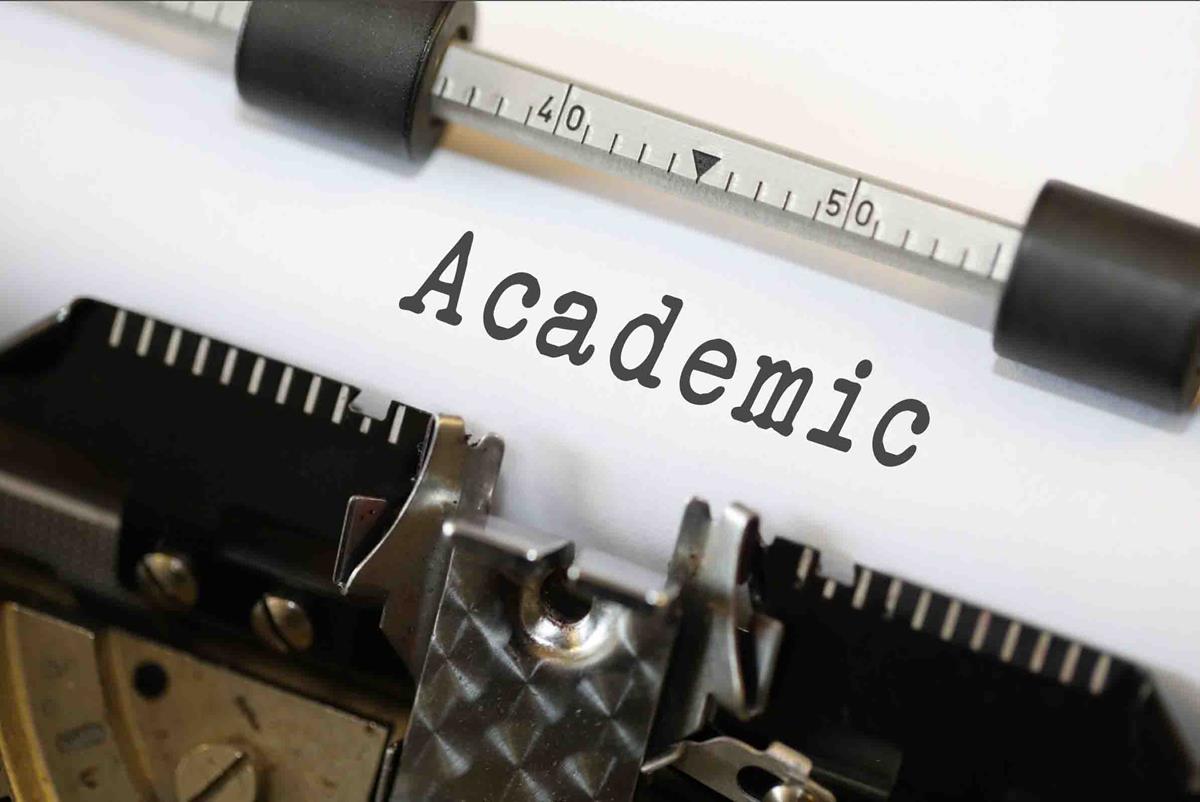
Dovolili jsme si přeložit a přetisknout několik tweetů švédského profesora Matse Björklunda o tom, jak by mohly vypadat akademické týmy. Přejeme všem českým i slovenským akademikům podobně smýšlejícího šéfa. Po 38 letech v akademické sféře, z toho 19 let jako vedoucí katedry (Animal Ecology Uppsala), jsem toho viděl mnoho a několik věcí jsem se I naučil. Zde […]
The post Několik zásad toho, jak ideálně vést akademický tým appeared first on GISportal.cz.
New EGNOS Safety-of-Life Service Definition Document Published
1.10.2018 10:57 European GNSS Agency
The new EGNOS Safety-of-Life Service Definition Document, published by the European GNSS Agency (GSA), highlights the service’s extended coverage area.
The GSA has published an updated EGNOS Safety-of-Life (SoL) Service Definition Document (SDD), which is now available to EGNOS users. A highlight of the new SDD is the significant extension to the declared service area that has been achieved since the last update in 2016. Overall, the service area has increased by 25%, with a substantial increase in coverage over Norway, Sweden and Finland and a slight increase over central Romania and north-east Bulgaria.
Improved availability of LPV-200
This extension in coverage equates to an important improvement in LPV-200 (Localizer Performance with Vertical guidance) availability. First declared in 2015, LPV-200 delivers accurate information on an aircraft’s approach to a runway with the use of GNSS positioning technology. The result is lateral and angular vertical guidance without the need for visual contact with the ground until an aircraft is 200 feet above the runway. Today there are 150 LPV-200 procedures published across Europe and 434 instrumental runway ends with published LPV/LPV-200 procedures, representing 35% of all European instrumental runway ends.
Additional clarifications and updates
The updated SDD clarifies use for non-EU and non-ATS cases, showing that it’s not only ANSPs that can benefit from EGNOS, but also aerodrome and rotocrafts operators. In addition, the SDD describes the characteristics and conditions of access to the EGNOS SoL service, along with providing information about the EGNOS system architecture, Single-in-Space (SIS) characteristic, service performance achieved, and EGNOS user interfaces.
Media note: This feature can be republished without charge provided the European GNSS Agency (GSA) is acknowledged as the source at the top or the bottom of the story. You must request permission before you use any of the photographs on the site. If you republish, we would be grateful if you could link back to the GSA website (http://www.gsa.europa.eu).
New EGNOS Safety-of-Life Service Definition Document Published
1.10.2018 10:57 European GNSS Agency
The new EGNOS Safety-of-Life Service Definition Document, published by the European GNSS Agency (GSA), highlights the service’s extended coverage area.
The GSA has published an updated EGNOS Safety-of-Life (SoL) Service Definition Document (SDD), which is now available to EGNOS users. A highlight of the new SDD is the significant extension to the declared service area that has been achieved since the last update in 2016. Overall, the service area has increased by 25%, with a substantial increase in coverage over Norway, Sweden and Finland and a slight increase over central Romania and north-east Bulgaria.
Improved availability of LPV-200
This extension in coverage equates to an important improvement in LPV-200 (Localizer Performance with Vertical guidance) availability. First declared in 2015, LPV-200 delivers accurate information on an aircraft’s approach to a runway with the use of GNSS positioning technology. The result is lateral and angular vertical guidance without the need for visual contact with the ground until an aircraft is 200 feet above the runway. Today there are 150 LPV-200 procedures published across Europe and 434 instrumental runway ends with published LPV/LPV-200 procedures, representing 35% of all European instrumental runway ends.
Additional clarifications and updates
The updated SDD clarifies use for non-EU and non-ATS cases, showing that it’s not only ANSPs that can benefit from EGNOS, but also aerodrome and rotocrafts operators. In addition, the SDD describes the characteristics and conditions of access to the EGNOS SoL service, along with providing information about the EGNOS system architecture, Single-in-Space (SIS) characteristic, service performance achieved, and EGNOS user interfaces.
Media note: This feature can be republished without charge provided the European GNSS Agency (GSA) is acknowledged as the source at the top or the bottom of the story. You must request permission before you use any of the photographs on the site. If you republish, we would be grateful if you could link back to the GSA website (http://www.gsa.europa.eu).
3D model interiéru přízemí budovy Přírodovědecké fakulty [Katedra aplikované geoinformatiky a kartografie, byTopic]
1.10.2018 10:45 Katedra aplikované geoinformatiky a kartografie Přf UK Podívejte se na animaci průletu přízemím budovy Přírodovědecké fakulty na Albertově, kterou vytvořil v rámci své bakalářské práce na katedře aplikované geoinformatiky a kartografie David Maceška.Předplatitelům časopisu
1.10.2018 10:10 Zeměměřič Vážení předplatitelé,jistě čekáte na nové vydání časopisu Zeměměřič.
V předchozím vydání 5+6/2018 redakce čtenářům oznámila, že kvůli finančním problémům nabízí časopis k prodeji...
V novém čísle britského časopisu Geoconnexion je Jakubův článek s VÚGTK o testování UAS v katastrálním mapování
1.10.2018 9:53 UpVision V novém říjnovém čísle britského časopisu Geoconnexion vyšel článek Jakuba a Václava Šafáře z VÚGTK o testování využití UAS v katastrálním mapování.Více zde:
https://plus.google.com/u/0/b/115833877689730865211/+UpvisionCz1/posts/TafZKjBLjMa
Empowering Women’s Voices at Esri and Beyond (ArcUser Online)
1.10.2018 9:00 GISCafe.com Webcasts-WebinarsESA vybírá družice třídy CubeSat pro doprovod sondy Hera
1.10.2018 8:46 Český Kosmický PortálCelý svět sleduje poskakující minirovery na asteroidu Ryugu, které sem vysadila japonská mise Hayabusa 2. ESA ale už hledí vpřed a chystá se vybrat CubeSaty pro průzkum binárního asteroidu v rámci zvažované mise Hera.
20181001 Vrchní referent/rada oddělení právních vztahů k nemovitostem
1.10.2018 8:45 ČÚZK - předpisy a opatření Katastrální úřad pro Středočeský kraj - Katastrální pracoviště Slaný Vyhlášení výběrového řízení: Vrchní referent/rada oddělení právních vztahů k nemovitostem V části "Úřední deska", v sekci "Oznámení a jiná úřední sdělení" bylo vystaveno "Oznámení o vyhlášení výběrového řízení na obsazení služebního místa Vrchní referent/rada oddělení právních vztahů k nemovitostem"20181001 Vrchní referent/rada oddělení právních vztahů k nemovitostem
1.10.2018 8:45 ČÚZK /Urady/Katastralni-urady/Katastralni-urady/Katastralni-urad-pro-Stredocesky-kraj/Katastralni-pracoviste/KP-Slany/O-uradu/Aktuality/20161013Rada-odborny-rada-–-informatik-(5)Vrchní referent/rada oddělení právních vztahů k nemovitostem
1.10.2018 8:43 ČÚZK /Urady/Katastralni-urady/Katastralni-urady/Katastralni-urad-pro-Stredocesky-kraj/Uredni-deska/Oznameni-a-jina-uredni-sdeleni/Volna-mista/Vrchni-referent-rada-oddeleni-pravnich-vztahu-k-neVrchní referent/rada oddělení právních vztahů k nemovitostem
1.10.2018 8:43 ČÚZK - volná místa Katastrální úřad pro Středočeský kraj - Katastrální pracoviště Slaný vypisuje výběrové řízení na místo Vrchní referent/rada oddělení právních vztahů k nemovitostemVrchní referent/rada oddělení právních vztahů k nemovitostem
1.10.2018 8:43 ČÚZK - předpisy a opatření Katastrální úřad pro Středočeský kraj - Katastrální pracoviště Slanývypisuje výběrové řízení na místo Vrchní referent/rada oddělení právních vztahů k nemovitostem
Vrchní referent/rada oddělení právních vztahů k nemovitostem
Nové usmernenie ÚGKK SR
1.10.2018 1:00
ÚGKK SR
Nové usmernenie ÚGKK SR č. USM_UGKK SR_12/2018, zo dňa 21. 09. 2016, ktorým sa ustanovuje postup pri vydávaní preukazu geodeta
"DigitalGlobe Spotlights Human Rights Violations with Satellite Imagery and Geoint" by Susan Smith
30.9.2018 10:49 GISCafe.com Webcasts-WebinarsÚspěch našeho studenta v soutěži [Katedra aplikované geoinformatiky a kartografie, byTopic]
30.9.2018 10:00 Katedra aplikované geoinformatiky a kartografie Přf UK V soutěži o nejlepší studentskou vědeckou práci v oboru geografie, SVP2018, pořádané tradičně Českou geografickou společností, získal Bc.
Juraj Považan, student oboru Geografie a kartografie, druhé místo.
Blahopřejeme!
Kotlíkové dotace II. výzva - Vyhodnocení podaných žádostí
29.9.2018 12:45 Středočeský kraj Odbor informatiky ve spolupráci s Odborem řízení dotačních projektů zpracoval webovou mapovou aplikaci Kotlíková dotace - II. výzva - Vyhodnocení podaných žádostí. Předmětem II. výzvy Kotlíkové dotace byla výměna stávajících ručně plněných kotlů na tuhá paliva za nové účinné nízkoemisní tepelné zdroje. Lhůta pro podávání žádostí o dotace byla zahájena dne 04.10.2017 a ukončena 29.06.2018. Žádosti o dotaci byly podávány elektronickou formou na vyhrazené webové stránce. Cílem této aplikace je seznámit veřejnost s výsledky statistických údajů přijatých žádostí. Aplikace odpovídá na otázky, např. kolik žádostí Středočeský kraj celkem přijal, kolik z nich bylo duplicit, o jaký typ tepelného zdroje byl největší zájem. Aplikace také umožňuje uživateli prostřednictvím interaktivní mapy získat podrobnější informace za jednotlivé obce jako místa realizace pro budoucí topná zařízení. Žádosti zaměřené na automatický kotel tuhá paliva (A2) lze také porovnat s oblastmi se zhoršenou kvalitou ovzduší.European Space Imaging Awarded €20 Million Maritime Contract
28.9.2018 21:20 GISCafe.com Webcasts-Webinars European Space Imaging has been awarded its third major contract for the provision of very high resolution optical satellite data to the European …Juniper Systems Unveils New Cedar CP3 Rugged Smartphone
28.9.2018 21:19 GISCafe.com Webcasts-Webinars BIRMINGHAM, United Kingdom, Sept. 25, 2018 (GLOBE NEWSWIRE) -- Juniper Systems Limited today announced the release of its newest Cedar™ device, …Bluesky Ultra High Resolution Aerial Mapping Supports Hull’s Smart City Plans
28.9.2018 21:18 GISCafe.com Webcasts-Webinars The city of Hull, UK, has been photographed from the air using the latest, ultra-high resolution survey cameras. Captured by aerial mapping company …How I went from Google intern to the head of Google Maps - Fast Company (Google Maps)
28.9.2018 21:18 GISCafe.com Webcasts-WebinarsGetech Releases Globe 2018 for Improved Basin Screening and Exploration
28.9.2018 21:17 GISCafe.com Webcasts-Webinars The Getech Group, suppliers of the expertise, support & knowledge that companies & governments need to better discover, develop & manage …Esri Talks Blockchain Readiness at CSCMP EDGE 2018 (ESRI)
28.9.2018 21:16 GISCafe.com Webcasts-WebinarsOrbit GT to exhibit and showcase new releases at INTERGEO, Frankfurt
28.9.2018 20:47 GISCafe.com Webcasts-Webinars Lokeren, Belgium, September 30th, 2018.Join Orbit GT at INTERGEO for the latest releases and presentations of the comprehensive Orbit 3D Mapping …
Orbital Insight and RBC Capital Markets Partner to Incorporate Geospatial Analytics into Next-Generation Sell-Side Research for Customers
28.9.2018 16:07 GISCafe.com Webcasts-Webinars PALO ALTO, Calif., NEW YORK and TORONTO, Sept. 28, 2018 (GLOBE NEWSWIRE) -- Orbital Insight, the leader in geospatial analytics, and RBC Capital …Nine infra projects in India named as finalists in Bentley’s Year in Infrastructure 2018 Awards
28.9.2018 16:04 Bentley SystemsPress Coverage
Geo Spatial World, India
Read the articleMott MacDonald chooses Bentley Systems for major infrastructure project
28.9.2018 15:59 Bentley SystemsPress Coverage
The Record, UK
Read the articleSurvey | Is your job threatened by technology?
28.9.2018 15:53 Bentley SystemsPress Coverage
New Civil Engineer, UK
Read the articleRising fast
28.9.2018 14:00 ESA Observing the Earth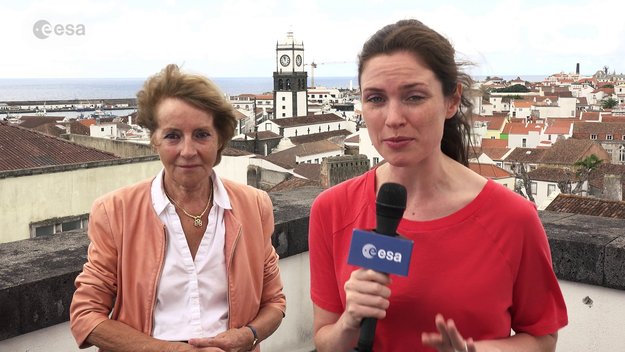
As the Radar Altimetry Symposium in the Azores draws to a close, Anny Cazenave joins ESA web TV to explain how satellite altimeters show that sea-level rise is accelerating
Registration for European Space Week 2018 is now open!
28.9.2018 13:28 European GNSS Agency
The European GNSS Agency (GSA) is pleased to announce that registration for European Space Week 2018 is now open. Register today, and don’t miss out on this opportunity to shape the discussion at the number one European Union space event connecting business, policy-makers, international experts, space-powered businesses and application user communities.
Space is coming to Marseille on 3-6 December 2018, in the beautiful Pharo Palace. Kicking off with the 2nd European GNSS User Consultation Platform and the 5th European Space Solutions Conference, presenting the latest space-powered answers to today’s business challenges, European Space Week 2018 will examine how Europe is using space to tackle challenges in such diverse areas as sustainable development, mobility, defence, economic development and the environment.
At the European Space Week plenary session, participants will learn more about the state of the art of Galileo, EGNOS and Copernicus, with input from keynote speakers and high-level officials, including Commissioner for Internal Market, Industry, Entrepreneurship and SMEs Elżbieta Bieńkowska, GSA Executive Director Carlo des Dorides, French Space Agency (CNES) President Jean-Yves Le Gall and many more.
Parallel sessions dedicated to Smart Cities, Sustainable Land Management, Interconnectivity, Marine and Maritime, Infrastructure Management, Security and Defence will examine how European businesses, entrepreneurs and small and medium-sized companies can harness the power of space technology to build the innovative applications and services needed in these areas.
EU Space Week highlights
|
European Space Week 2018 will be an opportunity to learn about the current status of the EU space programmes and to connect with more than 1,500 attendees from across Europe and beyond.
Follow this link to register for European Space Week 2018 and help shape the discussion about how the European space programmes Galileo, Copernicus and EGNOS can be harnessed to benefit Europe’s businesses and citizens.
Media note: This feature can be republished without charge provided the European GNSS Agency (GSA) is acknowledged as the source at the top or the bottom of the story. You must request permission before you use any of the photographs on the site. If you republish, we would be grateful if you could link back to the GSA website (http://www.gsa.europa.eu).
Registration for European Space Week 2018 is now open!
28.9.2018 13:28 European GNSS Agency
The European GNSS Agency (GSA) is pleased to announce that registration for European Space Week 2018 is now open. Register today, and don’t miss out on this opportunity to shape the discussion at the number one European Union space event connecting business, policy-makers, international experts, space-powered businesses and application user communities.
Space is coming to Marseille on 3-6 December 2018, in the beautiful Pharo Palace. Kicking off with the 2nd European GNSS User Consultation Platform and the 5th European Space Solutions Conference, presenting the latest space-powered answers to today’s business challenges, European Space Week 2018 will examine how Europe is using space to tackle challenges in such diverse areas as sustainable development, mobility, defence, economic development and the environment.
At the European Space Week plenary session, participants will learn more about the state of the art of Galileo, EGNOS and Copernicus, with input from keynote speakers and high-level officials, including Commissioner for Internal Market, Industry, Entrepreneurship and SMEs Elżbieta Bieńkowska, GSA Executive Director Carlo des Dorides, French Space Agency (CNES) President Jean-Yves Le Gall and many more.
Parallel sessions dedicated to Smart Cities, Sustainable Land Management, Interconnectivity, Marine and Maritime, Infrastructure Management, Security and Defence will examine how European businesses, entrepreneurs and small and medium-sized companies can harness the power of space technology to build the innovative applications and services needed in these areas.
EU Space Week highlights
|
European Space Week 2018 will be an opportunity to learn about the current status of the EU space programmes and to connect with more than 1,500 attendees from across Europe and beyond.
Follow this link to register for European Space Week 2018 and help shape the discussion about how the European space programmes Galileo, Copernicus and EGNOS can be harnessed to benefit Europe’s businesses and citizens.
Media note: This feature can be republished without charge provided the European GNSS Agency (GSA) is acknowledged as the source at the top or the bottom of the story. You must request permission before you use any of the photographs on the site. If you republish, we would be grateful if you could link back to the GSA website (http://www.gsa.europa.eu).
Hexagon app wins UX Design Award
28.9.2018 13:08 GISCafe.com Webcasts-Webinars Leica Cyclone FIELD 360 selected for image quality, visible results(Heerbrugg, Switzerland – 27 September 2018) – Hexagon’s …
New EC service monitors ionosphere for GNSS users
28.9.2018 10:38 European GNSS Agency
Ionospheric effects can be a major source of disruption to GNSS signals, so it is important to be able to predict and compensate for these disturbances. With this in mind, the European Commission-funded Galileo Ionosphere Prediction Service (IPS) monitors ionospheric activity and informs GNSS users in good time of an upcoming event that could disrupt GNSS signals and applications.
The IPS monitors and forecasts solar and ionospheric activity and predicts its effect on GNSS signals and on the final performance of user applications. The Service makes it possible to anticipate any degradation of performance, allowing operators to put in place mitigation measures in good time.
The IPS predictions are delivered for ionosphere-related parameters and GNSS performance at both the European and global level. Delivered in three time scales (nowcast, 30 minutes and 24 hours ahead), the alerts are sent to registered users when the IPS predictions exceed thresholds that have been-pre-defined by the user.
User benefits
The IPS will benefit all users of GNSS signals whose operations can be seriously disrupted by insufficient GNSS performance, in particular the aviation industry, where GNSS performance is important for safety. Also in the aviation sector, the IPS will contribute to ongoing International Civil Aviation Organisation (ICAO) developments in the framework of the Near Real-time Space Weather Information service provision.
The ICAO and other institutional initiatives in the field of operational space weather can reuse the IPS prediction products, compare them with their own predictions, or feed the additional observation and prediction data into their own algorithms to improve the reliability of the forecast. Other users that stand to benefit include electricity and energy grids and professional users such as construction and civil engineering businesses that require stable precise positioning accuracy for their operations.
Ionosphere Prediction Service ProductsThe IPS generates more than 160 different products in four areas: Solar physics
Ionosphere
GNSS performance
GNSS performance at application level
|
Fully automated
The IPS concept is based on three pillars – the sensors that take the measurements, a processing facility to generate forecasts and a web-based user interface. The prototype is fully automated and the platform is configurable - only products selected by the user are displayed on the user page.
To access the portal, click here.
Media note: This feature can be republished without charge provided the European GNSS Agency (GSA) is acknowledged as the source at the top or the bottom of the story. You must request permission before you use any of the photographs on the site. If you republish, we would be grateful if you could link back to the GSA website (http://www.gsa.europa.eu).
New EC service monitors ionosphere for GNSS users
28.9.2018 10:38 European GNSS Agency
Ionospheric effects can be a major source of disruption to GNSS signals, so it is important to be able to predict and compensate for these disturbances. With this in mind, the European Commission-funded Galileo Ionosphere Prediction Service (IPS) monitors ionospheric activity and informs GNSS users in good time of an upcoming event that could disrupt GNSS signals and applications.
The IPS monitors and forecasts solar and ionospheric activity and predicts its effect on GNSS signals and on the final performance of user applications. The Service makes it possible to anticipate any degradation of performance, allowing operators to put in place mitigation measures in good time.
The IPS predictions are delivered for ionosphere-related parameters and GNSS performance at both the European and global level. Delivered in three time scales (nowcast, 30 minutes and 24 hours ahead), the alerts are sent to registered users when the IPS predictions exceed thresholds that have been-pre-defined by the user.
User benefits
The IPS will benefit all users of GNSS signals whose operations can be seriously disrupted by insufficient GNSS performance, in particular the aviation industry, where GNSS performance is important for safety.
In addition, institutional actors interested in operational space weather can reuse the IPS prediction products, compare them with their own predictions, or feed the additional observation and prediction data into their own algorithms to improve the reliability of the forecast. Other users that stand to benefit include electricity and energy grids and professional users such as construction and civil engineering businesses that require stable precise positioning accuracy for their operations.
Ionosphere Prediction Service ProductsThe IPS generates more than 160 different products in four areas: Solar physics
Ionosphere
GNSS performance
GNSS performance at application level
|
Fully automated
The IPS concept is based on three pillars – the sensors that take the measurements, a processing facility to generate forecasts and a web-based user interface. The prototype is fully automated and the platform is configurable - only products selected by the user are displayed on the user page.
The prototype has been developed and funded by Horizon 2020, involving a team of engineers and scientists from across Europe, with the support of the Joint Research Centre in Ispra, Italy.
To access the portal, click here.
Media note: This feature can be republished without charge provided the European GNSS Agency (GSA) is acknowledged as the source at the top or the bottom of the story. You must request permission before you use any of the photographs on the site. If you republish, we would be grateful if you could link back to the GSA website (http://www.gsa.europa.eu).
New EC service monitors ionosphere for GNSS users
28.9.2018 10:38 European GNSS Agency
Ionospheric effects can be a major source of disruption to GNSS signals, so it is important to be able to predict and compensate for these disturbances. With this in mind, the European Commission-funded Galileo Ionosphere Prediction Service (IPS) monitors ionospheric activity and informs GNSS users in good time of an upcoming event that could disrupt GNSS signals and applications.
The IPS monitors and forecasts solar and ionospheric activity and predicts its effect on GNSS signals and on the final performance of user applications. The Service makes it possible to anticipate any degradation of performance, allowing operators to put in place mitigation measures in good time.
The IPS predictions are delivered for ionosphere-related parameters and GNSS performance at both the European and global level. Delivered in three time scales (nowcast, 30 minutes and 24 hours ahead), the alerts are sent to registered users when the IPS predictions exceed thresholds that have been-pre-defined by the user.
User benefits
The IPS will benefit all users of GNSS signals whose operations can be seriously disrupted by insufficient GNSS performance, in particular the aviation industry, where GNSS performance is important for safety.
In addition, institutional actors interested in operational space weather can reuse the IPS prediction products, compare them with their own predictions, or feed the additional observation and prediction data into their own algorithms to improve the reliability of the forecast. Other users that stand to benefit include electricity and energy grids and professional users such as construction and civil engineering businesses that require stable precise positioning accuracy for their operations.
Ionosphere Prediction Service ProductsThe IPS generates more than 160 different products in four areas: Solar physics
Ionosphere
GNSS performance
GNSS performance at application level
|
Fully automated
The IPS concept is based on three pillars – the sensors that take the measurements, a processing facility to generate forecasts and a web-based user interface. The prototype is fully automated and the platform is configurable - only products selected by the user are displayed on the user page.
To access the portal, click here.
Media note: This feature can be republished without charge provided the European GNSS Agency (GSA) is acknowledged as the source at the top or the bottom of the story. You must request permission before you use any of the photographs on the site. If you republish, we would be grateful if you could link back to the GSA website (http://www.gsa.europa.eu).
Earth from Space
28.9.2018 10:05 ESA Observing the Earth
In this week's edition, Sentinel-1 takes us over central Italy
Central Italy
28.9.2018 10:05 ESA Observing the Earth
Earth observation image of the week: in this false-colour image, Sentinel-1 captures the diversity and beauty of central Italy
Včera byla 4. konference Aliance pro bezpilotní letecký průmysl s našima dvěma přednáškama
28.9.2018 10:01 UpVision Včera se konala v Plzni už 4. Konference Aliance pro bezpilotní letecký průmysl, která se opět vydařila a kde jste nás mohli potkat, včetně kolegů z AirMapu.Měli jsme také dvě přednášky - o systému řízení dronů ve vzdušném prostoru (UTM) a o našem mapování v Mongolsku.
Fotografie zde:
https://plus.google.com/u/0/b/115833877689730865211/+UpvisionCz1/posts/SJZcXjB5Bgy
Technologickou agenturu ČR povede Petr Konvalinka
28.9.2018 7:32 GeoBusiness Rada pro výzkum, vývoj a inovace (RVVI) se v pátek 21. září 2018 sešla na svém 338. zasedání. Hlavními tématy byly volby členů výzkumné ... PřečístEpson Further Expands SureColor T-Series Wide-Format Printer Line with Two High-Production Wireless Workgroup Printers
28.9.2018 0:01 GISCafe.com Webcasts-Webinars 24-Inch SureColor T3470 and 36-Inch SureColor T5470 Offer Powerful, Precise Printing and Features for Workgroup ProductivityCHICAGO, Sept. 27, 2018 …
Maxar's Vice President of Regulatory and Policy Joins NASA Advisory Council
28.9.2018 0:01 GISCafe.com Webcasts-Webinars WESTMINSTER, CO, Sept. 27, 2018 — (PRNewswire) — Maxar Technologies (formerly MacDonald, Dettwiler and Associates Ltd.) (NYSE: …Boundless Launches Boundless Learning Platform
28.9.2018 0:00 GISCafe.com Webcasts-Webinars ST. LOUIS, Sept. 27, 2018 (GLOBE NEWSWIRE) -- Boundless, the leader in open and scalable GIS, today announced the launch of Boundless Learning, an …Ainstein Announces New Customizable Ultra Long Range Airborne and Ground-Based Drone Detection Radar Sensors at Commercial UAV Expo
28.9.2018 0:00 GISCafe.com Webcasts-Webinars LAWRENCE, Kan., Sept. 27, 2018 (GLOBE NEWSWIRE) -- Ainstein, a leader in intelligent radar sensing solutions, today announced two new products in …Hexagon’s Positioning Intelligence Division Now Provides Newly Integrated Solutions and Platforms for Autonomous Vehicle Development
27.9.2018 23:59 GISCafe.com Webcasts-Webinars CALGARY, Alberta, Sept. 27, 2018 (GLOBE NEWSWIRE) -- Hexagon’s Positioning Intelligence division (Hexagon PI) is pleased to welcome …Note from the President – September 2018
27.9.2018 21:51 Carlson Software Carlson 2019 on IntelliCAD 9.0 Works Natively on Microstation ® DGN Drawings A real breakthrough for newly released Carlson 2019 is that it can load and work natively in Microstation “.dgn” drawings. You also have the ability to start new drawings in “.dgn” mode using the File > New command. By “native”, we mean that […]Kosmonaut ESA Luca Parmitano poletí na misi Beyond
27.9.2018 21:08 Český Kosmický PortálKosmonaut ESA Luca Parmitano oznámil jméno a logo svého druhého kosmického letu. Stalo se tak během akce ve středisku ESA ESRIN v Itálii. Luca Parmitano se vydá na misi „Beyond“ (Dále než) na Mezinárodní kosmickou stanci v roce 2019. Bude součástí posádek Expedice 60 a 61, a to společně s ruským kosmonautem Alexandrem Skvorcovem a astronautem NASA Andrewem Morganem.
Kosmonaut ESA Luca Parmitano poletí na misi Beyond
27.9.2018 21:08 Český Kosmický PortálKosmonaut ESA Luca Parmitano oznámil jméno a logo svého druhého kosmického letu. Stalo se tak během akce ve středisku ESA ESRIN v Itálii. Luca Parmitano se vydá na misi „Beyond“ (Dále než) na Mezinárodní kosmickou stanci v roce 2019. Bude součástí posádek Expedice 60 a 61, a to společně s ruským kosmonautem Alexandrem Skvorcovem a astronautem NASA Andrewem Morganem.
Old School, New Tech
27.9.2018 20:28 Carlson Software There has been a lot of buzz and excitement about surveying with drones, scanners, and mobile LIDAR units over more than a decade and companies worldwide are scrambling to get on top of it. Manufacturers are spending a lot of time and resources in producing both hardware and software for what appears to be one […]Rada / odborný rada – organizační pracovník Kanceláře ředitele
27.9.2018 15:56 ČÚZK - volná místa Katastrální úřad pro Zlínský kraj vypisuje výběrové řízení na místo Rada / odborný rada – organizační pracovník Kanceláře řediteleRada / odborný rada – organizační pracovník Kanceláře ředitele
27.9.2018 15:56 ČÚZK - předpisy a opatření Katastrální úřad pro Zlínský krajvypisuje výběrové řízení na místo
Rada / odborný rada – organizační pracovník Kanceláře ředitele
Rada / odborný rada – organizační pracovník Kanceláře ředitele
27.9.2018 15:56 ČÚZK /Urady/Katastralni-urady/Katastralni-urady/Katastralni-urad-pro-Zlinsky-kraj/Uredni-deska/Oznameni-a-jina-uredni-sdeleni/Volna-mista/Rada-odborny-rada-–-organizacni-pracovnik-KancelRiver discharge
27.9.2018 15:43 ESA Observing the Earth
As the Radar Altimetry Symposium continues in the Azores, Angelica Tarpanelli joins ESA web TV to explain how river discharge affects our oceans and how this is measured
Nine Infrastructure Projects in Finalists in Bentley’s Year in Infrastructure 2018 Awards
27.9.2018 15:31 Bentley SystemsPress Coverage
Metro Rail News, India
Read the articleSiemens and Bentley Systems raise investment fund to €100 million
27.9.2018 15:26 Bentley SystemsPress Coverage
Robotics & Automation News, UK
Read the articleMoving to digital in asset management
27.9.2018 15:23 Bentley SystemsPress Coverage
International Oil & Gas Engineer, UK
Read the articleThe Seven Questions of BIM
27.9.2018 15:20 Bentley SystemsPress Coverage
BIM Today, UK
Read the articleSportovní GPS navigace tak trochu jinak
27.9.2018 11:22 GISportal.cz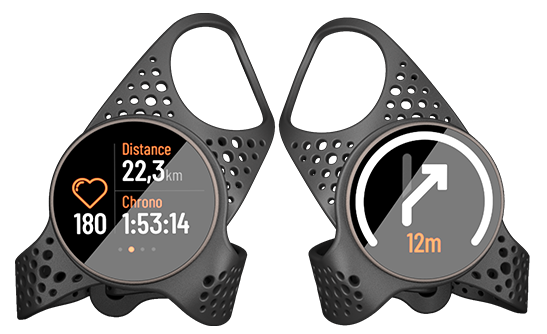
Na americkém webu Indiegogo (což je něco jako český Startovač či Hithit) se objevil projekt, který o sobě píše jako o revoluci ve sportovní navigaci. Tou “revolucí” je myšleno použití hned dvou hodinek s GPS – na každé ruce jedny, které Vám zjednoduší nejen navigaci, ale zároveň Vám umožní jednodušší přístup k různým sportovním statistikám. […]
The post Sportovní GPS navigace tak trochu jinak appeared first on GISportal.cz.
Sportovní GPS navigace tak trochu jinak
27.9.2018 11:22 GISportal.cz
Na americkém webu Ingiegogo (což je něco jako český Startovač či Hithit) se objevil projekt, který o sobě píše jako o revoluci ve sportovní navigaci. Tou “revolucí” je myšleno použití hned dvou hodinek s GPS – na každé ruce jedny, které Vám zjednoduší nejen navigaci, ale zároveň Vám umožní jednodušší přístup k různým sportovním statistikám. […]
The post Sportovní GPS navigace tak trochu jinak appeared first on GISportal.cz.
odborný/vrchní referent – obnova katastrálního operátu, Katastrální pracoviště Klatovy
27.9.2018 10:58 ČÚZK - předpisy a opatření Katastrální úřad pro Plzeňský kraj - Katastrální pracoviště Klatovyvypisuje výběrové řízení na místo
odborný/vrchní referent – obnova katastrálního operátu, Katastrální pracoviště Klatovy
odborný/vrchní referent – obnova katastrálního operátu, Katastrální pracoviště Klatovy
27.9.2018 10:58 ČÚZK /Urady/Katastralni-urady/Katastralni-urady/Katastralni-urad-pro-Plzensky-kraj/Uredni-deska/Oznameni-a-jina-uredni-sdeleni/Volna-mista/odborny-vrchni-referent-–-obnova-katastralniho-(1)odborný/vrchní referent – obnova katastrálního operátu, Katastrální pracoviště Klatovy
27.9.2018 10:58 ČÚZK - volná místa Katastrální úřad pro Plzeňský kraj - Katastrální pracoviště Klatovy vypisuje výběrové řízení na místo odborný/vrchní referent – obnova katastrálního operátu, Katastrální pracoviště KlatovyVideoseminář 2018 – díl třetí
27.9.2018 8:52 ARCDATASeznamte se s aplikací Sentinel Explorer, která byla vytvořena pro snadné prohlížení dat družice Sentinel 2. Vedle základních nástrojů pro zobrazení snímků nabízí také nástroje pro pokročilejší práci s daty, jako je porovnání dat z různých časových období nebo použití různých typů vykreslovačů pro sledování změn v krajině i ve zdraví vegetace apod. Na snímcích je také možné identifikovat jednotlivé objekty a zobrazit si jejich spektrální křivku či použít interaktivní rozptylogram.
CTA Says Drone Language in FAA Bill is a Win for Consumers and Commercial Operations
26.9.2018 22:39 GISCafe.com Webcasts-Webinars ARLINGTON, Va. — (BUSINESS WIRE) — September 26, 2018 —The following statement is attributed to Gary Shapiro, president and …
Argentine Coast Guard Selects Esri to Monitor Illegal Activities in Waterways
26.9.2018 18:31 GISCafe.com Webcasts-Webinars New System Uses Sensors and Satellite Imaging to Track Vessels inReal Time
REDLANDS, Calif. — (BUSINESS WIRE) — September …
Satellite built by Maxar's SSL successfully performing maneuvers
26.9.2018 18:31 GISCafe.com Webcasts-Webinars PALO ALTO, CA, Sept. 26, 2018 — (PRNewswire) — SSL, a Maxar Technologies company (formerly MacDonald, Dettwiler and Associates …HP Unveils New Digital Print Capabilities to Drive New Levels of Profitability, Quality, Creativity, and Automation
26.9.2018 18:31 GISCafe.com Webcasts-Webinars HP News Highlights at PRINT 18:…
Cape and Skyfire Consulting Team Up to Support End-to-End Drone Integration for Public Safety
26.9.2018 18:30 GISCafe.com Webcasts-Webinars Partnership gives agencies access to comprehensive solution for maximizing drone investmentsREDWOOD CITY, Calif., Sept. 26, 2018 — …
AT&T and Dedrone Team Up on IoT Solution to Protect Against Malicious Drones
26.9.2018 18:30 GISCafe.com Webcasts-Webinars IoT sensors detect unauthorized drone flights for military bases, venues, cities, enterprises, correctional facilities, and more.DALLAS, Sept. 26, …
Altimetry explained
26.9.2018 17:00 ESA Observing the Earth
With the Radar Altimetry Symposium underway in the Azores, Marcello Passaro joins ESA web TV to explain how satellite altimeters measure the height of the sea surface
Ariane 5: sto startů a jedeme dál!
26.9.2018 16:31 Český Kosmický PortálRaketa Ariane 5 při svém historickém stém letu dopravila na plánové oběžné dráhy telekomunikační družice Horizons-3e a Azerspace-2/Intelsat-38.
Ariane 5: sto startů a jedeme dál!
26.9.2018 16:31 Český Kosmický PortálRaketa Ariane 5 při svém historickém stém letu dopravila na plánové oběžné dráhy telekomunikační družice Horizons-3e a Azerspace-2/Intelsat-38.
Bentley and Siemens extend corporate alliance
26.9.2018 15:35 Bentley SystemsPress Coverage
World Highways, UK
Read the articleMaking the Most of Big Data
26.9.2018 15:32 Bentley SystemsPress Coverage
Industrial WaterWorld, UK
Read the articleCase study: WSP uses advanced 3D modeling to optimize the design of London’s newest iconic skyscraper
26.9.2018 15:27 Bentley SystemsPress Coverage
PBC Today, UK
Read the articleRisk & Reward
26.9.2018 15:21 Bentley SystemsPress Coverage
International Oil & Gas Engineer, UK
Read the article



